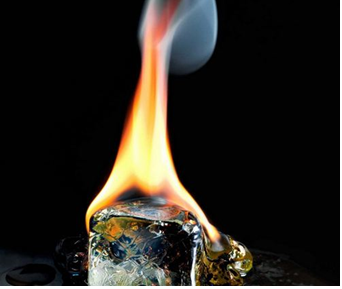 DWOG-Hyd 2021
DWOG-Hyd 2021
2021-12-18
来自话题:资源成藏
许兰芳等-中国科学院广州能源研究所-Lipid biomarkers in cold seep sediments from the northwestern slope of the South C
 收藏
收藏
Session 2 - Oral 3
Lipid biomarkers in cold seep sediments from the northwestern slope of the South China Sea
XU Lan-fang1, 4, GUAN Hong-xiang1,2, HU Yu3, LIU Li-hua1, MAO Sheng-yi1, SU Zheng1
1. Guangzhou Institute of Energy Conversion, Chinese Academy of Sciences, Guangzhou 540610, Guangdong, China; 2. Frontiers Science Center for Deep Ocean Multispheres and Earth System, Key Laboratory of Submarine Geosciences and Prospecting Techniques, MOE and College of Marine Geosciences, Ocean University of China, Qingdao 266100, Shandong, China; 3. Shanghai Engineering Research Center of Hadal Science and Technology, College of Marine Sciences, Shanghai Ocean University, Shanghai 201306, China; 4. University of Chinese Academy of Sciences, Beijing 100049, China
Abstract: Cold seep sediments of core QDN31 on the northwestern slope of the South China Sea at approximately 1390 m water depth were studied using lipid biomarker analyses to explore the characteristics of anaerobic methanotrophic archaea (ANME) and associated sulfate-reducing bacteria (SRB) involved in anaerobic oxidation of methane (AOM). Biogenic methane as a primary carbon source during AOM was demonstrated by the presence of 13C-depleted lipid biomarkers of ANME (with δ13C values as low as −116‰) and SRB (with δ13C values as low as −84‰). Low ratios of sn2-hydroxyarchaeol/archaeol (0.58 to 0.74) and high ratios of anteiso-C15/iso-C15 fatty acids (1.76 to 2.62) in the sediments pointed to ANME-1/SRB were the predominant microbial communities, which are known to be able to deal with a medium to low methane seepage intensities than ANME-2. Relatively higher methane seepage intensities at 30 cmbsf interval were testified by the most abundant content of ANME-derived biomarkers (phytanoic acid, phytanol, archaeol and sn2-hydroxyarchaeol) and the lowest δ13C value (-116‰). Instead, the absence of ANME biomarkers and the relatively positive δ13C value of SRB-derived biomarkers in the upper most sediment indicated that the seafloor surface was affected by AOM slightly.
Keywords: anaerobic oxidation of methane, ANME, SRB, cold seep, methane flux, the South China Sea

 UPC-WY
27帖子
UPC-WY
27帖子
 Haotian Wang
9帖子
Haotian Wang
9帖子
